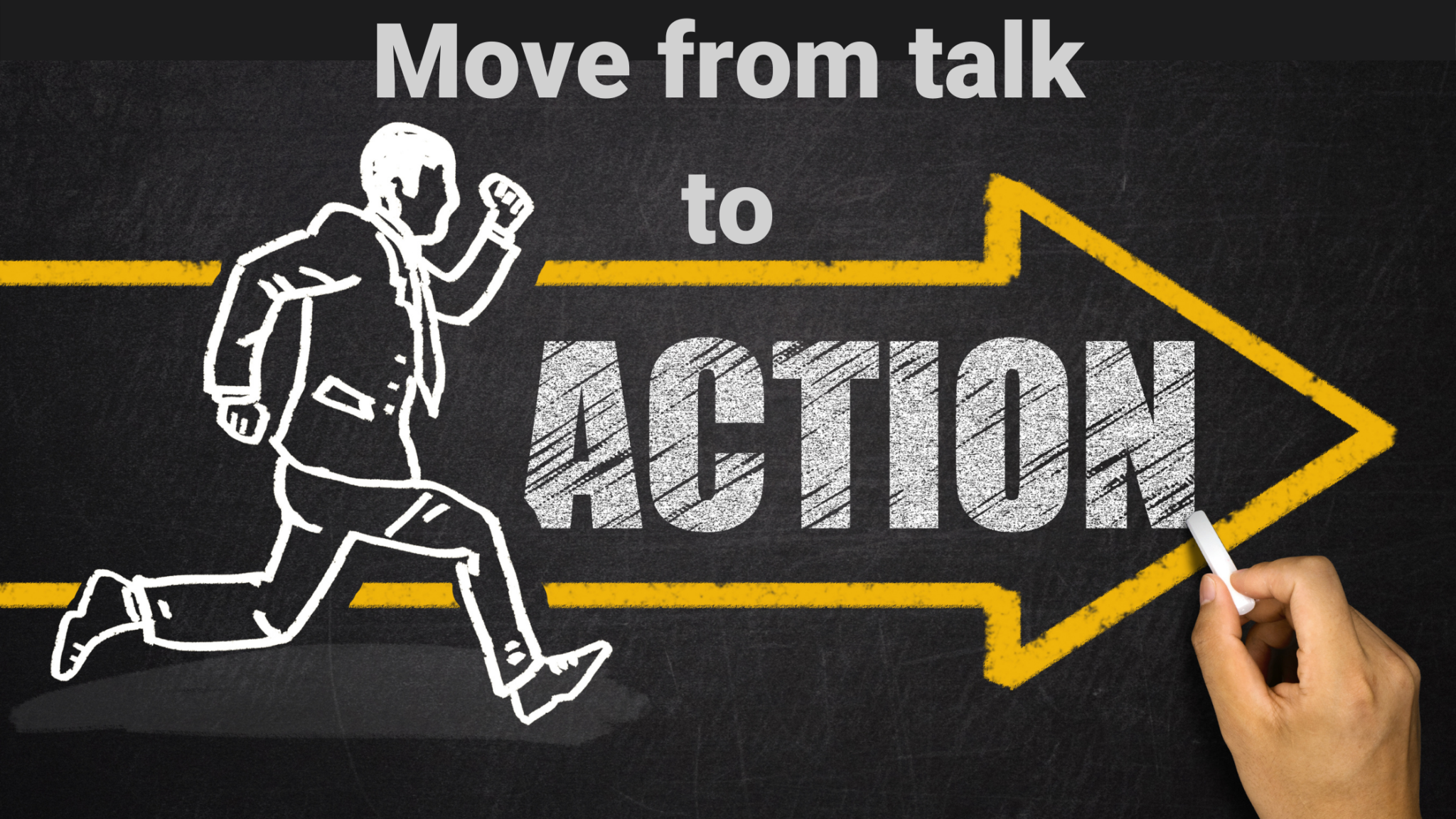
Jim Knight’s advice for helping teachers move from talk to action
In the February 2021 issue of Educational Leadership, Jim Knight wrote about the importance of moving from talk to action when trying to help teachers change their behavior and adopt new practices. Knight bases this framework on the book Changing for Good, and adds his own brand of insight on how to use this information to help understand a teacher’s mindset when they are trying to implement new practices. “Knowing the stages teachers tend to go through as they implement a new approach,” Knight writes, “makes it easier to support them.”
The 5 stages of implementation
The details for these five stages are available in the ASCD article, but they’re summarized below. Keep reading after the review of the five stages for three things you can do to assess teachers for their current stage and help them move towards being Proficient.
Non-Use
This stage could be called “the starting line.” At this point, teachers have not begun to implement a new strategy or practice, either because they do not want to use it or because they are unaware. People can also be stuck in the non-use stage because of emotional factors, which Jim outlines in his work on The Zero Learning Zone.
Awareness
At this stage, people are aware of the new practice they want to implement, and are not resistant to implementation, but do not have all the requisite knowledge they need to successfully implement it.
Mechanical
When people are in the mechanical phase of implementation, they understand the new practice and can begin to perform some of the actions, but the performance feels awkward and effortful. Mechanical implementation requires thought to be successful.
Routine
Routine implementation is the stage at which people begin to perform a new task or practice without having to think about individual steps or actions. At this stage, people can start to implement the practice automatically and with less effort than in previous stages.
Proficient
When people are proficient with new knowledge or skills, they are able to implement them with adaptability. An example of this would be a teacher who has developed such facility with a new lesson that they can deliver the lesson plan as originally intended, but also come up with new strategies to adapt components of the lesson to meet students needs.
Three things to do to assess a teacher’s implementation stage
Jim Knight’s impact cycle is a great way to frame coaching relationships that work through his defined stages of implementation. The first stage of this cycle is to identify the current reality for teachers. Often coaches gloss over the identify stage, preventing a true understanding of which stage of implementation a teacher is in. With that in mind, here are three strategies you can use to get a clear picture of reality.
Listen
 Often there is a disconnect between our perception of our abilities and reality. That’s why it’s important to make sure you’ve taken time to listen to a teacher’s perception of their current reality before making any assessment of their stage of implementation. Of course, assessing someone’s perception of themselves requires a certain level of trust and vulnerability. This might be accomplished through conversation, but only when a strong relationship already exists. A good way to fast track this is to ask the teacher to provide some kind of artifact from their implementation of a new skill and then have them describe their metacognition while showing this artifact. The strategy of Narration from the Harvard Best Foot Forward Project works very well to accomplish this. The important thing here is to make sure that you listen for understanding of the new practice, not for value judgements. So discourage statements like, “I did well” or “I need to improve this.” Rather, probe deeper for details that uncover understanding of the knowledge or skill being implemented in observable terms. If the teacher cannot concretely describe what they’re doing, they might still be in the non-use stage or awareness stage when they think they are in later stages.
Often there is a disconnect between our perception of our abilities and reality. That’s why it’s important to make sure you’ve taken time to listen to a teacher’s perception of their current reality before making any assessment of their stage of implementation. Of course, assessing someone’s perception of themselves requires a certain level of trust and vulnerability. This might be accomplished through conversation, but only when a strong relationship already exists. A good way to fast track this is to ask the teacher to provide some kind of artifact from their implementation of a new skill and then have them describe their metacognition while showing this artifact. The strategy of Narration from the Harvard Best Foot Forward Project works very well to accomplish this. The important thing here is to make sure that you listen for understanding of the new practice, not for value judgements. So discourage statements like, “I did well” or “I need to improve this.” Rather, probe deeper for details that uncover understanding of the knowledge or skill being implemented in observable terms. If the teacher cannot concretely describe what they’re doing, they might still be in the non-use stage or awareness stage when they think they are in later stages.
Read more about what to do when perception meets reality
Watch
Jim Knight has been a strong advocate for using video as a piece of data to help assess the current reality. However, not all video is created equal. In fact, helping a teacher decide what to record on video can be a valuable tool for assessing what stage of implementation they are in. This Recording With Purpose guide, available for free in the Sibme Learning Center, can help facilitate a planning conversation to decide what to watch before you begin watching video of implementation. Someone who has developed a mechanical understanding of a certain practice might be able to easily record and break down a video of the practice, but will not be able to easily identify the particular areas where they need to zoom in to develop greater proficiency. The more specific someone can be in describing what they need to record, the further along they are in the implementation stages.

Plan
For many people, the most difficult part of implementation is not understanding where they currently are in the 5 stages, but rather seeing a clear path to move to the next stage. In Jim Knight’s article, he discusses how perfectionism often gets in the way of progress because of our fear of mistakes or lack of complete understanding.
 This is where a thoughtful coach can begin to take a more instructive approach to the implementation process. By helping to break down the steps in between, and setting goals that are small and achievable, coaches can help teachers move from their current reality to the very next step in their journey. The goal should never be to move from the Unaware stage directly to the Proficient stage. Instead, think of the 5 stages of implementation as a continuum, with the goal of moving from one stage to the next sequentially.
This is where a thoughtful coach can begin to take a more instructive approach to the implementation process. By helping to break down the steps in between, and setting goals that are small and achievable, coaches can help teachers move from their current reality to the very next step in their journey. The goal should never be to move from the Unaware stage directly to the Proficient stage. Instead, think of the 5 stages of implementation as a continuum, with the goal of moving from one stage to the next sequentially.
For more strategies on how to set goals, check out our Ultimate Guide to Goal Setting.
Talking doesn’t work
Jim Knight’s closing thoughts on moving from talk to action provide a valuable lesson on how to move through the 5 stages of implementation.
“Talking about change can feel like something is actually happening, even though, as the Chinese proverb says, “Talk doesn’t cook rice.” But the only way professional development can have a positive effect on students’ learning and well-being is if that new knowledge is translated into action.”
Knowledge of these stages is only the beginning of helping coach someone towards implementation of a new skill. As most athletes and performers know, the best way to do something is to do it. This is why these strategies for assessing a teacher’s implementation stage are all based on action and reflection, not just conversation. So don’t just sit down for a conversation if you want to begin implementation. Start by following the advice of the famous Bonnie Raitt song:
“Let’s give ’em something to talk about.”
Actions, after all, speak much louder than words.

